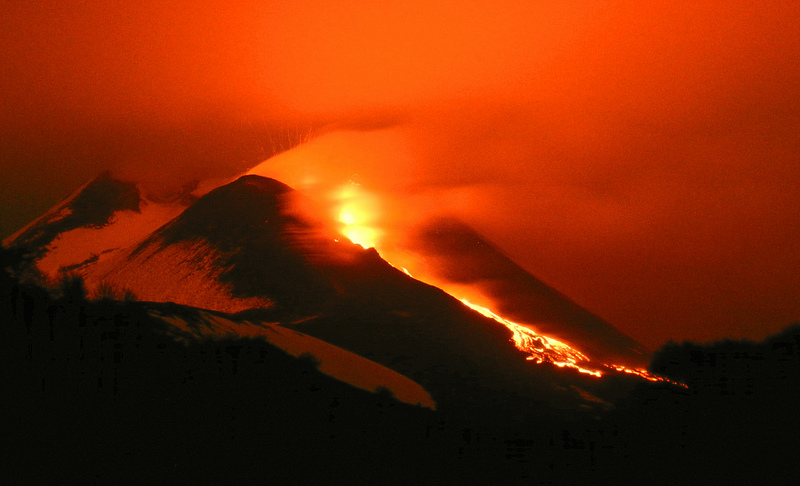Italian Volcano Erupts for 7th Time This Year


Sicily's Mount Etna wowed onlookers and researchers with yet another spectacular show last week. It was the restive peak's 25th dramatic lava display since the volcano ramped up activity in January 2011, and the seventh so far this year.
Signs the mountain was primed for yet another paroxysm first appeared on the morning of April 21, when Mount Etna sent out small plumes of ash.
However, it wasn't until nearly two days later, early on April 23, that observers spotted a tiny trickle of lava spilling from the mountain.
As the day wore on, lava issued from several vents high atop the volcano in fits and starts, according to Boris Behncke, a volcanologist with Italy's National Institute of Geophysics and Volcanology, reached by email.
Behncke, a scientist and accomplished photographer, captured the above photograph at about 8:20 p.m., local time, on April 23.
The mountain was taking its time, Behncke wrote in a description of the evening. It didn't explode with its full fury until the wee hours of April 24, when it sent up fountains of lava for about 25 minutes.
Mount Etna is one of the most active volcanoes on Earth. Between January and August 2000, the mountain experienced 66 of these episodes of "lava fountaining," and a total of 250 since 1995.
Get the world’s most fascinating discoveries delivered straight to your inbox.
The mountain experienced two similar eruptive events earlier in the month. Behncke caught the volcano's spectacular April 1 display on camera.
Although those who live near the mountain have grown used to its rumblings, Behncke said this most recent event was somewhat unusual.
"What is quite fascinating this time is the rather heavy fallout of pyroclastic material," he said. The mountain blanketed areas as far as 12 miles (20 kilometers) away with ash and scoriae — small, porous and very light fragments of basaltic rock.
Behncke said it's likely that strong winds at the time of Mount Etna's explosive eruption, as opposed to any unusual volcanic activity itself, were likely the culprit behind the unusually large area covered with volcanic material in the aftermath.
"I am happy the wind did not blow into the direction of our home," Behncke said. "Cleaning up this sort of material is a pain in the neck."
Reach Andrea Mustain at amustain@techmedianetwork.com. Follow her on Twitter @AndreaMustain. Follow OurAmazingPlanet for the latest in Earth science and exploration news on Twitter @OAPlanet and on Facebook.


